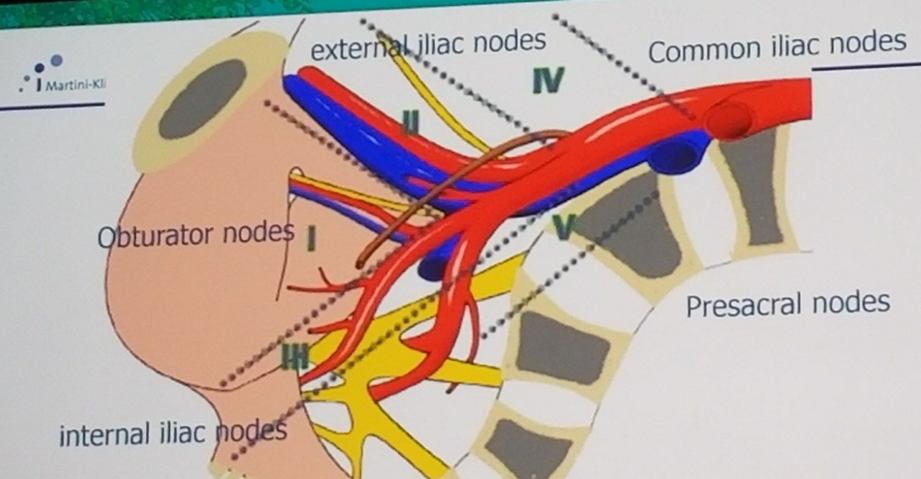A recently published systematic review included 66 studies with over 275,000 patients, assessing the oncologic and functional outcomes and complication rate of different extents of PLND.1 The results demonstrated no significant differences in survival among the different groups. Furthermore, the more aggressive the PLND, the higher the complication rate, including longer operating times, longer hospital stay, more blood loss and higher rate of lymphocele. No differences were discerned in erectile dysfunction and incontinence rates. Other similar data demonstrate that EPLND results in twice the overall complication rate, twice the lymphocele rate and 1.7 day longer length of hospital stay, when compared to standard PLND.
Dr. Graefen continued and tried to explain why urologists continue to perform EPLND despite these discouraging data. One reason is for its diagnostic benefit (identification of metastatic disease and to decide if to administer adjuvant therapy). The other reason is for its potential therapeutic benefit (improve regional control and perhaps provide a possibility for cure). It has been shown that patients with 3 or more positive lymph nodes have significantly worse cancer specific mortality rates than those with 1-2 positive lymph nodes.2 This data can be useful when considering adjuvant treatment options.
In summary, the uncertainty of EPLND on prognosis in PC is recognized. The increase of morbidity with increasing extent of PLND has been proven, but there has been no demonstrated effect on patient functional outcome. Importantly, the diagnostic value of PLND is beneficial. High quality data is still lacking, and randomized controlled trials are needed to identify patients who will benefit the most form PLND.
Figure 1 – Extended pelvic lymph node dissection:

Speaker: Markus Graefen, MD, Professor University Medical Center Hamburg-Eppendorf, Hamburg, Germany
Written By: Hanan Goldberg, MD, Urologic Oncology Fellow (SUO), University of Toronto, Princess Margaret Cancer Centre @GoldbergHanan at The 15th Meeting of the EAU Section of Oncological Urology ESOU18 - January 26-28, 2018 - Amsterdam, The Netherlands
References:
1. Fossati N, Willemse PM, Van den Broeck T, et al. The Benefits and Harms of Different Extents of Lymph Node Dissection During Radical Prostatectomy for Prostate Cancer: A Systematic Review. European urology 2017; 72(1): 84-109.
2. Preisser F, Marchioni M, Nazzani S, et al. The Impact of Lymph Node Metastases Burden at Radical Prostatectomy. European urology focus 2018.


